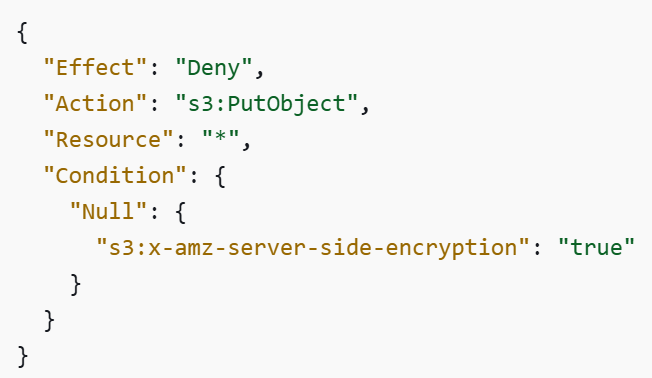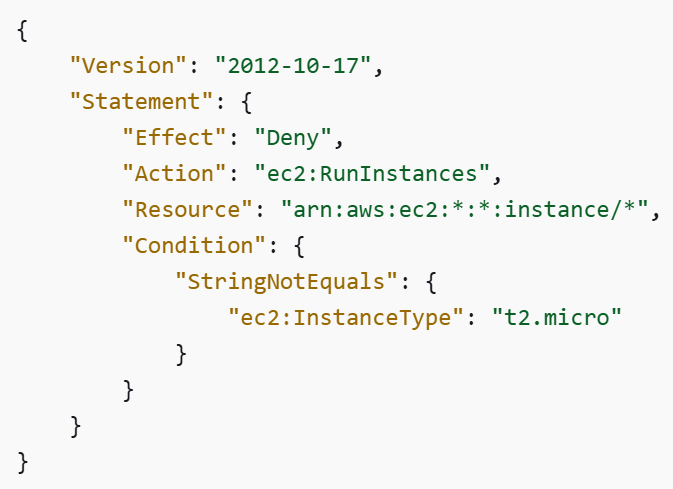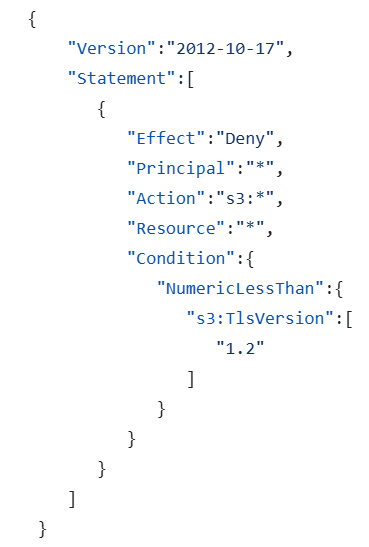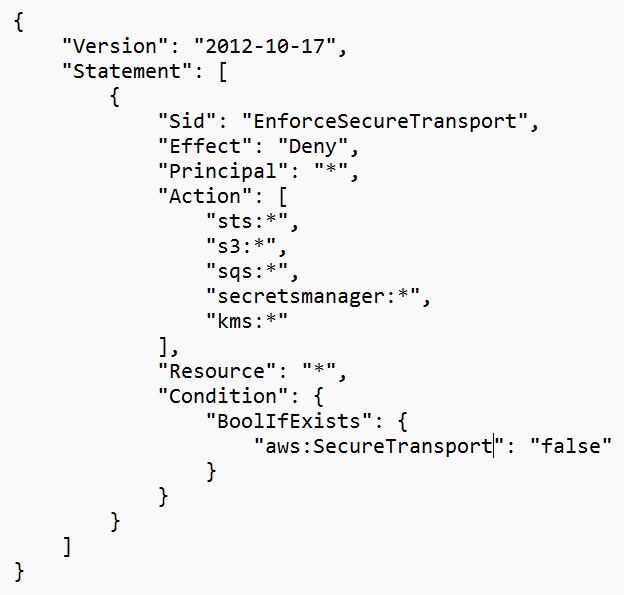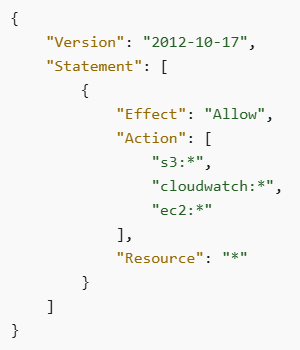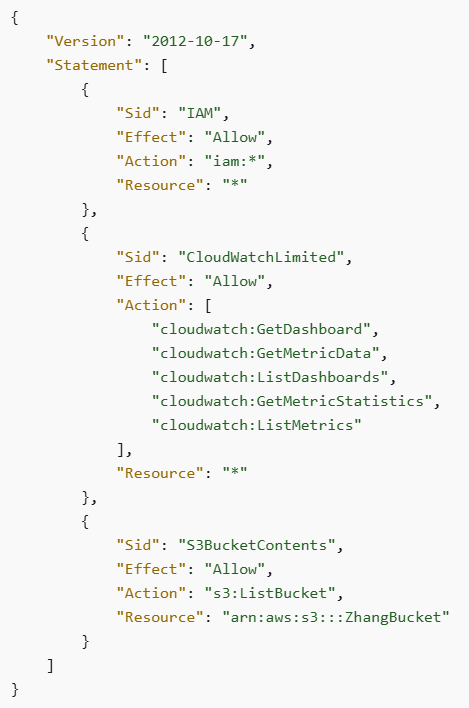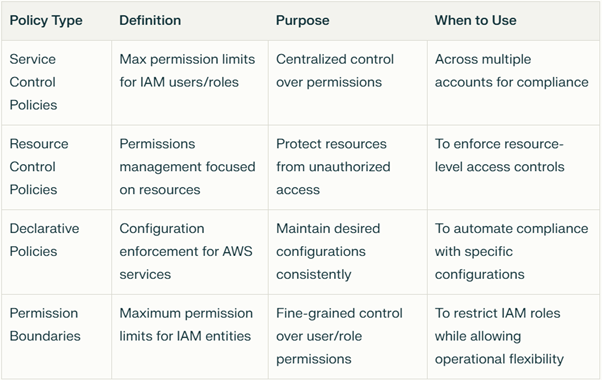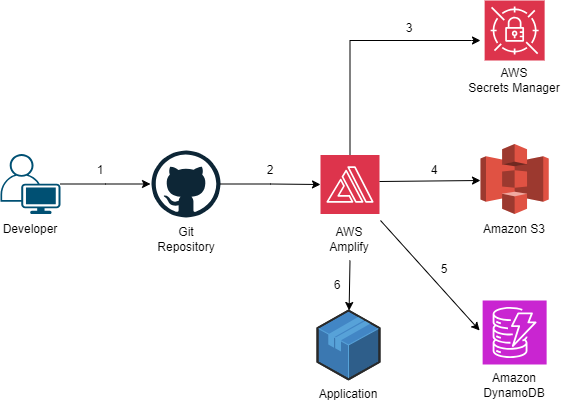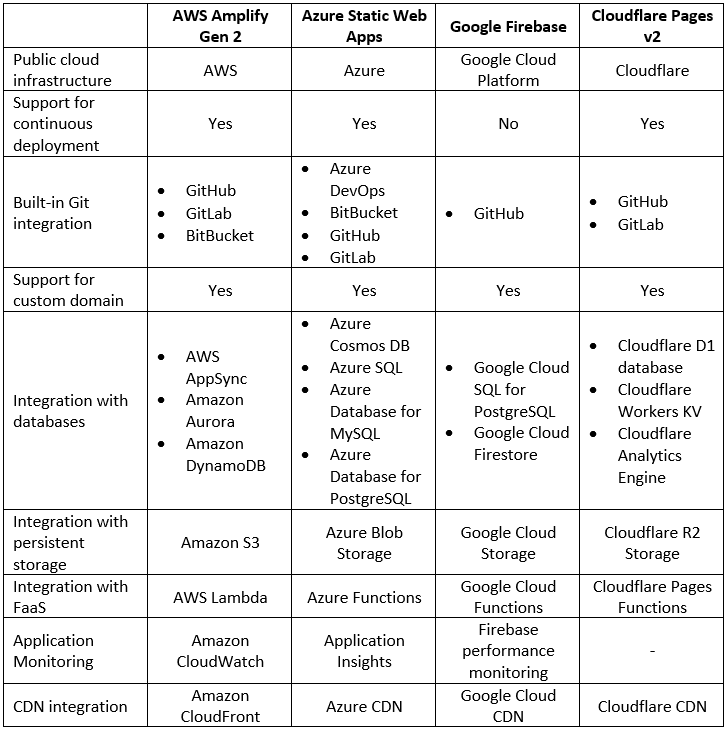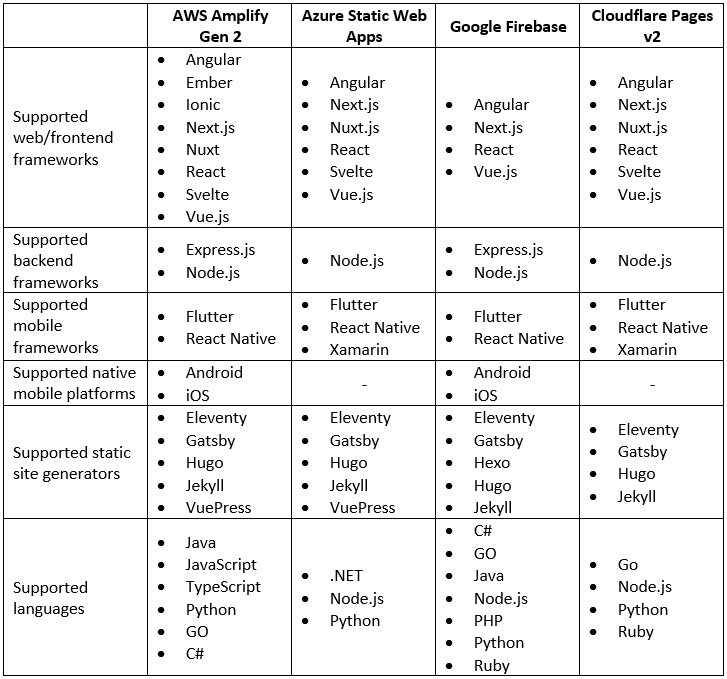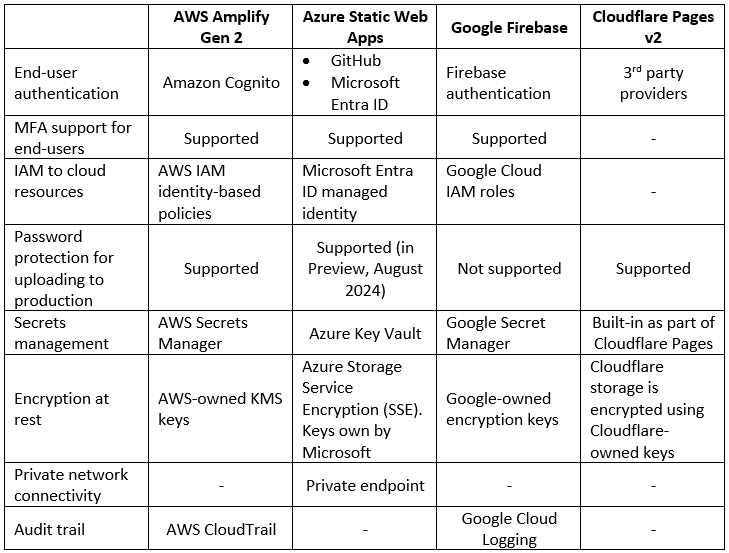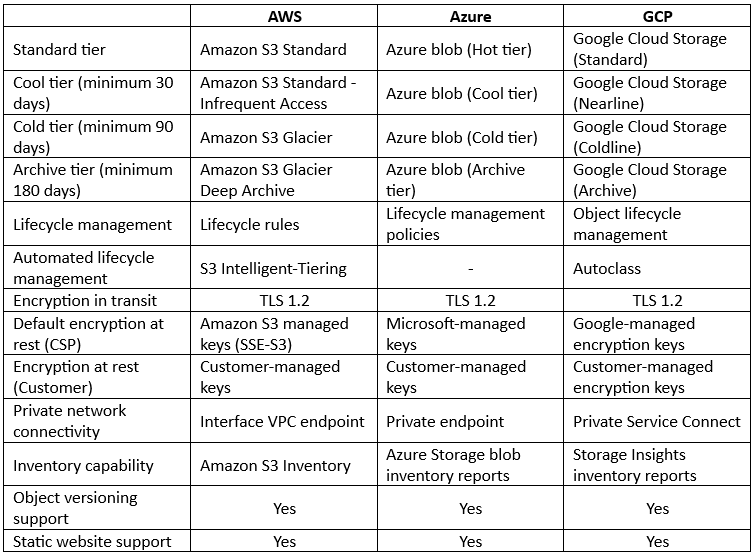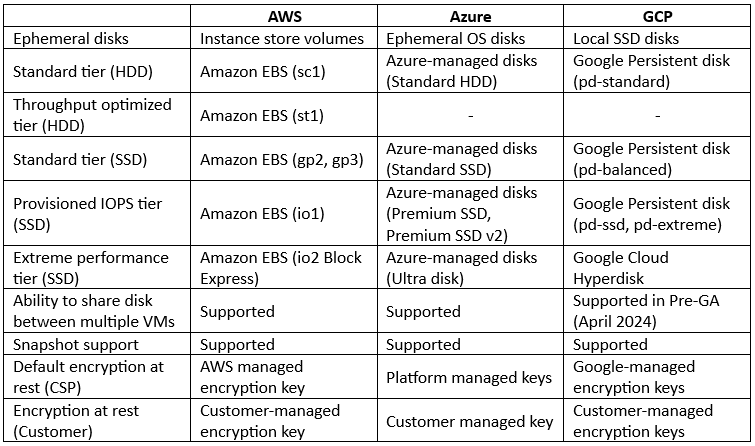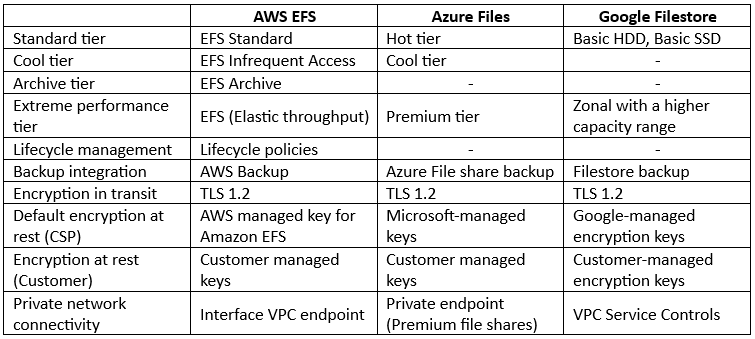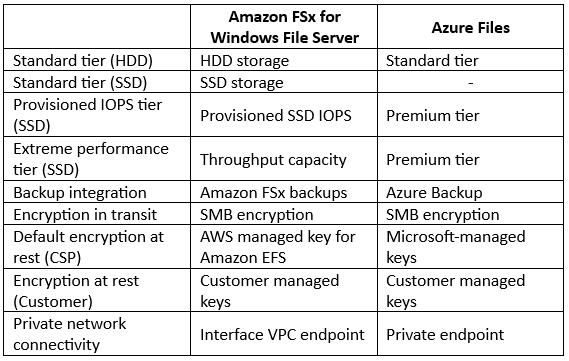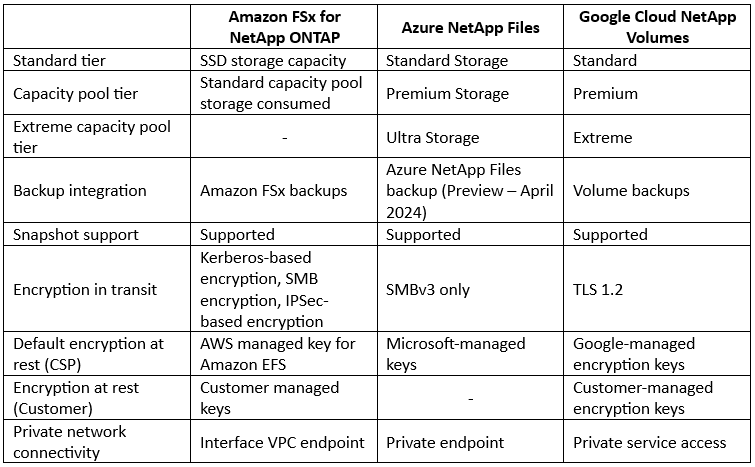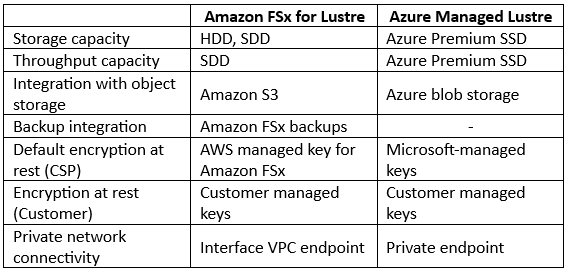Enforcing guardrails in the AWS environment
When building workloads in the public cloud, one of the most fundamental topics to look at is permissions to access resources and take actions.
This is true for both human identities (also known as interactive authentication) and for application or service accounts (also known as non-interactive authentication).
AWS offers its customers multiple ways to enforce guardrails – a mechanism to allow developers or DevOps teams to achieve their goals (i.e., develop and deploy new applications/capabilities) while keeping pre-defined controls (as explained later in this blog post).
In this blog post, I will review the various alternatives for enforcing guardrails in AWS environments.
Service control policies (SCPs)
SCPs are organizational policies written in JSON format. They are available only for customers who enabled all features of AWS Organization.
Unlike IAM policies, which grant identities access to resources, SCPs allow configuring the maximum allowed permissions identities (IAM users and IAM roles) have over resources (i.e., permissions guardrails), within an AWS Organization.
SCPs can be applied at an AWS Organization root hierarchy (excluding organization management account), an OU level, or to a specific AWS account in the AWS Organization, which makes them impact maximum allowed permissions outside IAM identities control (outside the context of AWS accounts).
AWS does not grant any access by default – if an AWS service has not been allowed using an SCP somewhere in the AWS Organization hierarchy, no identity will be able to consume it.
A good example of using SCP is to configure which AWS regions are enabled at the organization level, and as a result, no resources will be created in regions that were not specifically allowed. This can be very useful if you have a regulation that requires storing customers’ data in a specific AWS region (for example – keep all EU citizens’ data in EU regions and deny all regions outside the EU).
Another example of configuring guardrails using SCP is enforcing encryption at rest for all objects in S3 buckets. See the policy below:
SCPs are not only limited to security controls; they can also be used for cost. In the example below, we allow the deployment of specific EC2 instance types:
Source: https://docs.aws.amazon.com/organizations/latest/userguide/orgs_manage_policies_scps_syntax.html
When designing SCPs as guardrails, we need to recall that it has limitations. A service control policy has a maximum size of 5120 characters (including spaces), which means there is a maximum number of conditions and amount of fine-grain policy you can configure using SCPs.
Additional references:
- https://docs.aws.amazon.com/organizations/latest/userguide/orgs_manage_policies_scps.html
- https://github.com/aws-samples/service-control-policy-examples
Resource control policies (RCPs)
RCPs, similarly, to SCPs are organizational policies written in JSON format. They are available only for customers who enabled all features of AWS Organization.
Unlike IAM policies, which grant identities access to resources, RCPs allow configuring the maximum allowed permissions on resources, within an AWS Organization.
RCPs are not enough to be able to grant permissions to resources – they only serve as guardrails. To be able to access a resource, you need to assign the resource an IAM policy (an identity-based or resource-based policy).
Currently (December 2024), RCPs support only Amazon S3, AWS STS, Amazon SQS, AWS KMS and AWS Secrets Manager.
RCPs can be applied at an AWS Organization root hierarchy (excluding organization management account), an OU level, or to a specific AWS account in the AWS Organization, which makes them impact maximum allowed permissions outside IAM identities control (outside the context of AWS accounts).
An example of using RCP can be to require a minimum version of TLS protocol when accessing an S3 bucket:
Another example can be to enforce HTTPS traffic to all supported services:
Source: https://docs.aws.amazon.com/organizations/latest/userguide/orgs_manage_policies_rcps_examples.html
Another example of using RCPs is to prevent external access to sensitive resources such as S3 buckets.
Like SCPs, RCPs have limitations. A resource control policy has a maximum size of 5120 characters (including spaces), which means there is a maximum number of conditions and amount of fine-grain policy you can configure using RCPs.
Additional references:
- https://docs.aws.amazon.com/organizations/latest/userguide/orgs_manage_policies_rcps.html
- https://github.com/aws-samples/resource-control-policy-examples
- https://github.com/aws-samples/data-perimeter-policy-examples
Declarative policies
Declarative policies allow customers to centrally enforce a desired configuration state for AWS services, regardless of changes in service features or APIs.
Declarative policies can be created using AWS Organizations console, AWS CLI, CloudFormation templates, and AWS Control Tower.
Currently (December 2024), declarative policies support only Amazon EC2, Amazon EBS, and Amazon VPC.
Declarative policies can be applied at an AWS Organization root hierarchy, an OU level, or to a specific AWS account in the AWS Organization.
An example of using Declarative policies is to block resources inside a VPC from reaching the public Internet:
Another example is to configure default IMDS settings for new EC2 instances:
Like SCPs and RCPs, Declarative policies have their limitations. A declarative policy has a maximum size of 10,000 characters (including spaces).
Additional references:
- https://docs.aws.amazon.com/organizations/latest/userguide/orgs_manage_policies_declarative.html
- https://aws.amazon.com/blogs/aws/simplify-governance-with-declarative-policies/
- https://docs.aws.amazon.com/controltower/latest/controlreference/declarative-controls.html
Permission boundaries
Permission boundaries are advanced IAM features that define the maximum permissions granted using identity-based policies attached to an IAM user or IAM role (but not directly to IAM groups), effectively creating a boundary around their permissions, within the context of an AWS account.
Permissions boundaries serve as guardrails, allowing customers to centrally configure restrictions (i.e., limit permissions) on top of IAM policies – they do not grant permissions.
When applied, the effective permissions are as follows:
- Identity level: Identity-based policy + permission boundaries = effective permissions
- Resource level: Resource-based policy + Identity-based policy + permission boundaries = effective permissions
- Organizations level: Organizations SCP + Identity-based policy + permission boundaries = effective permissions
- Temporary Session level: Session policy + Identity-based policy + permission boundaries = effective permissions
An example of using permission boundaries to allow access only to Amazon S3, Amazon CloudWatch, and Amazon EC2 (which can be applied to a specific IAM user):
Source: https://docs.aws.amazon.com/IAM/latest/UserGuide/access_policies_boundaries.html
Another example is to restrict an IAM user to specific actions and resources:
Source: https://docs.aws.amazon.com/IAM/latest/UserGuide/access_policies_boundaries.html
Like SCPs, RCPs, and Declarative policies, permission boundaries have their limitations. A permission boundary has a maximum size of 6144 characters (including spaces), and you can have up to 10 managed policies and 1 permissions boundary attached to an IAM role.
Additional references:
- https://docs.aws.amazon.com/IAM/latest/UserGuide/access_policies_boundaries.html
- https://aws.amazon.com/blogs/security/when-and-where-to-use-iam-permissions-boundaries/
- https://github.com/aws-samples/example-permissions-boundary
Summary
In this blog post, I have reviewed the various alternatives that AWS offers its customers to configure guardrails for accessing resources within AWS Organizations at a large scale.
Each alternative serves a slightly different purpose, as summaries below:
I encourage you to read AWS documentation, explaining the logic for evaluating requests to access resources:
I also highly recommend you watch the lecture “Security invariants: From enterprise chaos to cloud order from AWS re:Invent 2024”:
About the author
Eyal Estrin is a cloud and information security architect, an AWS Community Builder, and the author of the books Cloud Security Handbook and Security for Cloud Native Applications, with more than 20 years in the IT industry.
You can connect with him on social media (https://linktr.ee/eyalestrin).
Opinions are his own and not the views of his employer.
My 2025 Wishlist for Public Cloud Providers
Anyone who has been following me on social media knows that I am a huge advocate of the public cloud.
By now, we are just after the biggest cloud conferences — Microsoft Ignite 2024 and AWS re:Invent 2024, and just before the end of 2024.
As we are heading to 2025, I thought it would be interesting to share my wishes from the public cloud providers in the coming year.
Resiliency and Availability
The public cloud has existed for more than a decade, and at least according to the CSPs documentation, it is designed to survive major or global outages impacting customers all over the world.
And yet, in 2024 each of the CSPs had suffered from major outages. To name a few:
- Summary of the Amazon Kinesis Data Streams Service Event in Northern Virginia (US-EAST-1) Region
- Azure Incident Retrospective: Storage issues in Central US
- Incident affecting Cloud Firestore, Google App Engine, Google Cloud Functions
In most cases, the root cause of outages originates from unverified code/configuration changes, or lack of resources due to spike or unexpected use of specific resources.
The result always impacts customers in a specific region, or worse in multiple regions.
Although CSPs implement different regions and AZs to limit the blast radius and decrease the chance of major customer impact, in many cases we realize that critical services have their control plane (the central management system that provides orchestration, configuration, and monitoring capabilities) deployed in a central region (usually in East US data centers), and the blast radius impact customers all over the world.
My wish for 2025 from CSPs — improve the level of testing, and observability, for any code or configuration change (whether done by engineers, or by automated systems).
For the long term, CSPs should find a way to design the service control plane to be synced and spread across multiple regions (at least one copy in each continent), to limit the blast radius of global outages.
Secure by Default
Reading the announcements of new services, and the service official documentation, we can learn the CSPs understand the importance of “secure by default”, i.e., enabling a service or capability, where security configuration was designed from day 1.
And yet, in 2024 each of the CSPs had suffered from security incidents resulting from a misconfiguration. To name a few:
- AWS Security Bulletin AWS-2024–003
- Microsoft Power Pages: Data Exposure Reviewed
- Exploring Google Cloud Default Service Accounts: Deep Dive and Real-World Adoption Trends
It is always best practice to read the vendor’s documentation, and understand the default settings or behavior of every service or capability we are enabling, however, following the shared responsibility model, as customers, we expect the CSPs to design everything secured by default.
I understand that some CSPs’ product groups have an agenda for releasing new services to the market as quickly as possible, allowing customers to experience and adopt new capabilities, but security must be job zero.
My wish for 2025 from CSPs is to put security higher in your priorities — this is relevant for both the product groups and the development teams of each product.
Invest in threat modeling, from the design phase until each service/capability is deployed to production, and try to anticipate what could go wrong.
Choose secure/close by default (and provide documentation to allow customers to choose if they wish to change the default settings), instead of keeping services exposed, which forces customers to make changes after the fact, after their data was already exposed to unauthorized parties).
Service Retirements
I understand that from time to time a product group, or even the business of a CSP reviews the list of currently available services and decides to retire a service, leaving their customers with no alternative or migration path.
In 2024 we saw several publications of service retirements. To name a few:
- AWS to discontinue Cloud9, CodeCommit, CloudSearch, and several other services
- Azure Media Services retirement guide
- Google Cloud Platform (GCP) has announced the end-of-sale for Cloud Source Repositories
The leader of service retirement/deprecation is GCP, followed by Azure.
In some cases, customers receive (short) notice, asking them to migrate their data and find an alternate solution, but from a customer point of view, it does not look good (to be politically correct), that the services that we have been using for a while are now stopped working and we need to find alternate solutions for production environments.
Although AWS service was far from being ideal while decommissioning services such as Cloud9, and Code Commit, their approach is different from the rest of the cloud providers, with their working backwards development methodology.
My wish for 2025 from CSPs is to put customers first and do market research before head. Check with your customers what capabilities are they looking for, before beginning the development of a new service.
Even if the market changes over time, remember that you have production customers using your services. Prepare alternatives in advance and a documented migration path to those alternatives. Do everything you can to support services for a very long time, and if there is no other alternative, keep supporting your services, even with no new capabilities, but at least your customers will know that in case of production issues, or discovered security vulnerabilities, they will have support and an SLA.
Cost and Economics of Scale
When organizations began migrating their on-prem workloads to the public cloud, the notion was that due to economics of scale, the CSPs would be able to offer their customers cost-effective alternatives for consuming services and infrastructure, compared to the traditional data centers.
Many customers got the equation wrong, trying to compare the cost of hardware (such as VMs and storage) between their data center, and the public cloud alternative, without adding to the equation the cost of maintenance, licensing, manpower, etc., and the result was a higher cost for “lift & shift” migrations in the public cloud. In the long run, after a decade of organizations working with the public cloud, the alternative of re-architecture provides much better and cost-effective results.
Although we have not seen documented publications of CSPs announcing an increase in service costs, there are cases that from a customer’s point of view simply do not make sense.
A good example is egress data cost. If all CSPs do not charge customers for ingress data costs, there is no reason to charge for egress data costs. It is the same hardware, so I really cannot understand the logic in high (or any) charges of egress data. Customers should have the option to pull data from their cloud accounts (sometimes to keep data on-prem in hybrid environments, and sometimes to allow migration to other CSPs), without being charged.
The same rule applies to inter-zone traffic charges (see AWS and GCP documentation), or to enabling private traffic inside the CSPs backbone (see AWS, Azure, and GCP documentation).
My wish for 2025 from CSPs is to put customers first. CSPs are already encouraging customers to build highly-available infrastructure spanned across multiple AZs, and encouraging customers to keep the services that support customers’ data private (and not exposed to the public Internet). Although the public cloud is a business that wishes to gain revenue, CSPs should think about their customers, and offer them more capabilities, but at lower prices, to make the public cloud the better and cost-effective alternative to the traditional data centers.
Vendor Lock-In
This was a challenge from the initial days of the public cloud. Each CSP offered its alternative and list of services, with different capabilities, and naturally different APIs.
From an architectural point of view, customers should first understand the business demands, before choosing a technology (or specific services from a specific CSP).
Each CSP offers its services, and it does not mean it has to be a negative thing — if in doubt, I highly recommend you to watch the lecture “Do modern cloud applications lock you in?” by Gregor Hohpe, from AWS re:Invent 2023.
In the past, there was the notion that packaging our applications inside containers and perhaps using Kubernetes (in its various managed alternatives), would enable customers to switch between cloud providers or deploy highly-available workloads on top of multiple CSPs. This notion was found to be false since containers do not leave in a vacuum, and customers do not pack their entire application inside a single container/microservice. Cloud-native applications are deployed inside a cloud eco-system, and consume data from other services such as storage, networking, databases, message queuing, etc., so trying to migrate between CSPs will still require a lot of effort connecting to different sets of APIs.
My wish for 2025 from CSPs, and I know it is a lot to ask, but could you invest in standardization of your APIs?
Instead of customers having to add abstraction layers on top of cloud services, forcing them to choose the lower common denominator, why not offer the same APIs, and hopefully the same (or mostly the same) capabilities?
If we look at Kubernetes, and its CSI Storage, as two examples — they allow customers to consume container orchestration and backend storage using similar APIs, and they are both supported by the CNCF, which allows customers an easy alternative to deploy and maintain cloud resources, even on top of different CSPs.
Summary
There are a lot more things I wish Santa Claus could bring me in 2025, but as it relates to the public cloud, I truly wish each of the CSPs product group could read my blog post and begin making the required changes to allow customers better experience in all the areas that I have mentioned in my blog post.
For the readers in the audience, feel free to contact me on social media, and share with me your thoughts about this blog post.
About the author
Eyal Estrin is a cloud and information security architect, an AWS Community Builder, and the author of the books Cloud Security Handbook and Security for Cloud Native Applications, with more than 20 years in the IT industry.
You can connect with him on social media (https://linktr.ee/eyalestrin).
Opinions are his own and not the views of his employer.
Qualities of a Good Cloud Architect
In 2020 I published a blog post called “What makes a good cloud architect?“, where I tried to lay out some of the main qualities required to become a good cloud architect.
Four years later, I still believe most of the qualities are crucial, but I would like to focus on what I believe today is critical to succeed as a cloud architect.
Be able to see the bigger picture
A good cloud architect must be able to see the bigger picture.
Before digging into details, an architect must be able to understand what the business is trying to achieve (from a chatbot, e-commerce mobile app, a reporting system for business analytics, etc.)
Next, it is important to understand technological constraints (such as service cost, resiliency, data residency, service/quota limits, etc.)
A good architect will be able to translate business requirements, together with technology constraints, into architecture.
Being multi-lingual
An architect should be able to speak multiple languages – speak to business decision-makers understand their goals, and be able to translate it to technical teams (such as developers, DevOps, IT, engineers, etc.)
The business never comes with a requirement “We would like to expose an API to end-customers”. They will probably say “We would like to provide customers valuable information about investments” or “Provide patients with insights about their health”.
Being multi-disciplinary
There is always the debate between someone who is a specialist in a certain area (from being an expert in a specific cloud provider’s eco-system or being an expert in specific technology such as Containers or Serverless) and someone who is a generalist (having broad knowledge about cloud technology from multiple cloud providers).
I am always in favor of being a generalist, having hands-on experience working with multiple services from multiple cloud providers, knowing the pros and cons of each service, making it easier to later decide on the technology and services to implement as part of an architecture.
Being able to understand modern technologies
The days of architectures based on VMs are almost gone.
A good cloud architect will be able to understand what an application is trying to achieve, and be able to embed modern technologies:
- Microservice architecture, to split a complex workload into small pieces, developed and owned by different teams
- Containerization solutions, from managed Kubernetes services to simpler alternatives such as Amazon ECS, Azure Container Apps, or Google Cloud Run
- Function-as-a-Service, been able to process specific tasks such as image processing, handling user registration, error handling, and much more.
Note: Although FaaS is considered vendor-opinionated, and there is no clear process to migrate between cloud providers, once decided on a specific CSP, a good architect should be able to find the pros for using FaaS as part of an application architecture.
- Event-driven architecture has many benefits in modern applications, from decoupling complex architecture, the ability for different components to operate independently, the ability to scale specific components (according to customers’ demand) without impacting other components of the application, and more.
Microservices, Containers, or FaaS does not have to be the answer for every architecture, but a good cloud architect will be able to find the right tools to achieve the business goals, sometimes by combining different technologies.
We must remember that technology and architecture change and evolve. A good cloud architect should reassess past architecture decisions, to see if, over time, different architecture can provide better results (in terms of cost, security, resiliency, etc.)
Understanding cloud vs. on-prem
As much as I admire organizations that can design, build, and deploy production-scale applications in the public cloud, I admit the public cloud is not a solution for 100% of the use cases.
A good cloud architect will be able to understand the business goals, with technological constraints (such as cost, resiliency requirements, regulations, team knowledge, etc.), and be able to understand which workloads can be developed as cloud-native applications, and which workloads can remain, or even developed from scratch on-prem.
I do believe that to gain the full benefits of modern technologies (from elasticity, infinite scale, use of GenAI technology, etc.) an organization should select the public cloud, but for simple or stable workloads, an organization can find suitable solutions on-prem as well.
Thoughts of Experienced Architects
Make unbiased decisions
“A good architecture allows major decisions to be deferred (to a time when you have more information). A good architecture maximizes the number of decisions that are not made. A good architecture makes the choice of tools (database, frameworks, etc.) irrelevant.”
Source: Allen Holub
Beware the Assumptions
“Unconscious decisions often come in the form of assumptions. Assumptions are risky because they lead to non-requirements, those requirements that exist but were not documented anywhere. Tacit assumptions and unconscious decisions both lead to missed expectations or surprises down the road.”
Source: Gregor Hohpe
Cloud building blocks – putting things together
“A cloud architect is a system architect responsible for putting together all the building blocks of a system to make an operating application. This includes understanding networking, network protocols, server management, security, scaling, deployment pipelines, and secrets management. They must understand what it takes to keep systems operational.”
Source: Lee Atchison
Being a generalist
“Good generalists need to cast a wider net to define the best-optimized technologies and configurations for the desired business solution. This means understanding the capabilities of all cloud services and the trade-offs of deploying a heterogeneous cloud solution.”
Source: David Linthicum
The importance of cost considerations
“By considering cost implications early and continuously, systems can be designed to balance features, time-to-market, and efficiency. Development can focus on maintaining lean and efficient code. And operations can fine-tune resource usage and spending to maximize profitability.”
Source: Dr. Werner Vogels
Summary
There are many more qualities of a good and successful cloud architect (from understanding cost decisions, cybersecurity threats and mitigations, designing for scalability, high availability, resiliency, and more), but in this blog post, I have tried to mention the qualities that in 2024 I believe are the most important ones.
Whether you just entered the role of a cloud architect, or if you are an experienced cloud architect, I recommend you keep learning, gain hands-on experience with cloud services and the latest technologies, and share your knowledge with your colleagues, for the benefit of the entire industry.
About the author
Eyal Estrin is a cloud and information security architect, and the author of the books Cloud Security Handbook and Security for Cloud Native Applications, with more than 20 years in the IT industry.
You can connect with him on social media (https://linktr.ee/eyalestrin).
Opinions are his own and not the views of his employer.
Unpopular opinion about “Moving back to on-prem”
Over the past year, I have seen a lot of posts on social media about organizations moving back from the public cloud to on-prem.
In this blog post, I will explain why I believe it is nothing more than a myth, and why the public cloud is the future.
Introduction
Anyone who follows my posts on social media knows that I am a huge advocate of the public cloud.
Back in 2023, I published a blog post called “How to Avoid Cloud Repatriation“, where I explained why I believe that organizations rushed to the public cloud, without having a clear strategy, that would guide them on which workloads are suitable to run in the public cloud, to invest in cost management and employee training, etc.
I am aware of Barclay’s report from mid-2024 claiming that according to conversations they had with CIOs, 83% of the surveyed organizations plan to move workloads back to private cloud, while another report from Synergy Research Group (published in August 2024), claiming that “hyper-scale operators are 41% of the worldwide capacity of all data centers”, and “Looking ahead to 2029, hyper-scale operators will account for over 60% of all capacity, while on-premises will drop to just 20%”.
Analysts claim there is a trend of organizations to move back to on-prem, but the newspapers are far from been filled with customer stories (specifically enterprises), who moved their production workloads from the public cloud to the on-prem.
You may be able to find some stories about small companies (with stable workloads and highly skilled personnel), who decided to move back to on-prem, but it is far from being a trend.
I do not disagree that large workloads in the public cloud will cost an organization a lot of money, but it raises a question:
Has the organization embedded cost as part of any architecture decision from day 1, or has the organization ignored cost for a long time and realized now that the usage of cloud resources costs a lot of money if not managed properly?
Why do I believe the future is in the public cloud?
I am not looking at the public cloud as a solution for all IT questions/issues.
As with any (kind of) new field, an organization must invest in learning the topic from the bottom up, consult with experts, create a cloud strategy, and invest in cost, security, sustainability, and employee training, to be able to get the full benefits of the public cloud.
Let us dig deeper into some of the main areas where we see benefits of the public cloud:
Scalability
One of the huge benefits of the public cloud is the ability to scale horizontally (i.e., add or remove compute, storage, or network resources according to customer demand).
Were you able to horizontally scale using the traditional virtualization on-prem? Yes.
Did you have the capacity to scale virtually unlimited? No. Organizations are always limited by the amount of hardware they purchase and deploy in their on-prem data center.
Data center management
Regardless of what people may believe, most organizations do not have the experience of building and maintaining data centers to be physically secured, energetic sustainable, and to be CSP grade highly available.
Data centers do not produce any business value (unless you are in the data center or hosting industry), and in most cases, moving the responsibility to a cloud provider will be more beneficial for most organizations.
Hardware maintenance
Let us assume your organization decided to purchase expensive hardware for their SAP HANA cluster, or an NVIDIA cluster with the latest GPUs for AI/ML workloads.
In this scenario, your organization will need to pay in advance for several years, train your IT on deployment and maintenance of the purchased hardware (do not forget the cooling of GPUs…), and the moment you complete deploying the new hardware, your organization is in charge of the on-going maintenance, until the hardware will become outdated (probably couple of weeks/months after you purchased the hardware), and not you are stacked with old hardware, that will not be able to suit your business needs (such as the latest GenAI LLMs).
In the public cloud, you pay for the resources that you need, scale as needed, and pay only for the resources being used (unless you decide to go for Spot, or savings plans, to lower the total costs).
Using or experimenting with new technology
In the traditional data center, we are stacked with a static data center mentality, i.e., use what you currently have.
One of the greatest capabilities the public cloud offers us is switching to a dynamic mindset. Business managers would like their organizations to provide new services to their customers, in a short time-to-market.
A new mindset encourages experimentation, allowing development teams to build new products, experiment with them, and if the experiment fails, switch to something else.
One of the examples of experimentation is the spiky usage of GenAI technology. Suddenly everyone is using (or planning to use) LLMs to build solutions (from chatbots, through text summarization, and image or video generation).
Only the public cloud will allow organizations to experiment with the latest hardware and the latest LLMs for building GenAI applications.
If you try to experiment with GenAI, you will have to purchase dedicated hardware (which will soon get outdated and will not be sufficient for your business needs for a long time), and you will suffer from resource limitations (at least when using the latest LLMs).
Storage capacity
In the traditional data center, organizations (almost) always suffer from limited storage capacity.
The more organizations collect data (for business analytics, providing customers added-value, research, AI/ML, etc.), to more data will be produced and needs to be stored.
In the on-prem, you are eventually limited with the amount of storage you can purchase and physically deploy in your data center.
Once organizations (usually large enterprises), store PBs of data in the public cloud, the cost and time to move such amounts of data out of the public cloud to on-prem (or even to another cloud provider), will be so high, that eventually, most organizations will keep their data as is, and it will become a hard decision to move out of their existing cloud provider.
Modern / Cloud-native applications
Building modern applications changes the way organizations develop and deploy new applications.
Most businesses would like to move faster and provide new solutions to their customers.
Although you could develop new applications based on Kubernetes on-prem, the cost and complexity of managing the control plane, and the limited scale capabilities, will make your solution a wannabe cloud. A small and pale version of the public cloud.
You could find Terraform/OpenTofu providers for some of the resources that exist on-prem (mostly for the legacy virtualization), but how do you implement infrastructure-as-code (not to mention policy-as-code) in legacy systems? How will you benefit from automated system deployment capabilities?
Conversation about data residency/data sovereignty
This is a hot topic, at least since the GDPR in the EU became effective in 2018.
Today most public cloud providers have regions in most (if not all) countries with data regulation laws.
Not to mention that 85-90 percent of all IaaS/PaaS solutions are regional, meaning, the CSP will not transfer your data from the EU to the US unless you specifically design your workloads accordingly (due to egress data cost, and service built-in limitations).
If you want to add an extra layer of assurance, choose cloud services that allow you to encrypt your data using customer-managed keys (i.e., keys that the customer controls the key generation and rotation process).
Summary
I am sure we can continue and deep dive into the benefits of the public cloud vs. the limitations of the on-prem data center (or what people sometimes refer to as “private cloud”).
For the foreseen future (and I am not saying this as something beneficial), we will continue to see hybrid clouds, while more and more organizations will see the benefits of the public cloud and migrate their production workloads and data to the public cloud.
We will continue to find scenarios where the on-prem and legacy applications will continue to provide value for organizations, but as technology evolves (see GenAI for example), we will see more and more organizations consuming public cloud services.
To gain the full benefit of the public cloud, organizations need to understand how the public cloud can support their business, allowing them to focus on what matters (such as developing new services for their customers), and lower the work on data center maintenance.
Organizations should not neglect cost, security, sustainability, and employee training, to be able to gain the full benefit of the public cloud.
I strongly believe that the public cloud is the future, for developing and innovative solutions, while shipping the hardware and data center responsibility for companies who specialize in this field.
Why do I call it an “unpopular opinion”? When people are reluctant to change, they rather stick with what they know and are familiar with. Change can be challenging, but if organizations embrace the change, look strategically into the future, embed cost into their decisions, and invest in employee training, they will be able to adapt to the change and see its benefits.
About the author
Eyal Estrin is a cloud and information security architect, and the author of the books Cloud Security Handbook and Security for Cloud Native Applications, with more than 20 years in the IT industry.
You can connect with him on social media (https://linktr.ee/eyalestrin).
Opinions are his own and not the views of his employer.
Cybersecurity burnout is a real risk

Business leaders around the world understand the importance of cybersecurity for supporting the business, complying with laws and regulations, and earning customers’ trust.
Good CISOs know how to lead cybersecurity efforts, from raising money for the cybersecurity budget, taking part in incident investigation, recruiting talents to support the security efforts, and making sure their organizations remain safe (as much as possible).
There is one topic not getting enough attention – employees’ burnout.
No doubt working in cybersecurity is stressful – and it impacts all levels – from the top management of CISO/CSO to the lower levels of any practitioner in the industry.
To keep up in a cybersecurity role, you need to have passion for what you do. Find the time to keep up with technology evolvement, and new attacks published every day, while still doing your everyday job, in protecting the organizations you work for.
Let us talk about some statistics:
- 67% of responders say “My organization has a significant shortage of cybersecurity staff to prevent and troubleshoot cybersecurity issues” (Source: ISC2 2023 cybersecurity workforce study)
- 90% of organizations have skills gaps within their security teams (Source: ISC2 2024 cybersecurity workforce study)
- 90% of CISOs globally say they are concerned about the impact of stress, fatigue, and burnout on their workforce’s well-being (Source: Hack the Box)
- 89% of cybersecurity professionals globally say the workload, volume of projects to deliver, and the time needed to deliver tasks are the key causes of burnout (Source: Hack the Box)
- 74% of cybersecurity professionals globally say that they have taken time off due to work-related mental well-being problems (Source: Hack the Box)
- 32% of CISOs or IT Cybersecurity Leaders in the UK and US are considering leaving their current organization (Source: BlackFog)
- 30% cited the lack of work-life balance (Source: BlackFog)
- 27% stated that too much time was spent on firefighting rather than focusing on strategic issues (Source: BlackFog)
We can see that cybersecurity employees (at all levels) suffer from huge stress as part of their daily work, struggling to keep up with their ongoing tasks, and balancing personal time with their families.
Good CISOs/CSOs will know how to do their job, pushing the boundaries and protecting their organizations, but the big question is – do CISOs/CSOs have the emotional intelligence to focus on their most important asset – employees?
Can cybersecurity leaders find the time to speak with their employees, to sense when the tension is too much for an employee to handle, and do something about it?
The work of cybersecurity teams is crucial for organizations (keep the organization safe and secure, comply with regulations, and earn customers’ trust), but if organizations ignore the human factor, they will lose valuable employees, and we already have a talent shortage in the cybersecurity industry.
CISO/CSO – do not wait until your talents reach burnout and resign, have a personal conversation with them, try to lower the load on employees (among others by raising the budget for more positions in the cybersecurity teams), and never neglect your employees.
About the author
Eyal Estrin is a cloud and information security architect, and the author of the books Cloud Security Handbook and Security for Cloud Native Applications, with more than 20 years in the IT industry.
You can connect with him on social media (https://linktr.ee/eyalestrin).
Opinions are his own and not the views of his employer.
Comparison of Serverless Development and Hosting Platforms

When designing solutions in the cloud, there is (almost) always more than one alternative for achieving the same goal.
One of the characteristics of cloud-native applications is the ability to have an automated development process (such as the use of CI/CD pipelines).
In this blog post, I will compare serverless solutions for developing and hosting web and mobile applications in the cloud.
Why choose a serverless solution?
From a developer’s point of view, there is (almost) no value in maintaining infrastructure – the whole purpose is to enable developers to write new applications/features and provide value to the company’s customers.
Serverless platforms allow us to focus on developing new applications for our customers, without the burden of maintaining the lower layers of the infrastructure, i.e., virtual machine scale, patch management, host machine configuration, and more.
Serverless development and hosting platforms allow us CI/CD workflow, from Git repository to the build stage, and finally deployment to the various application stages (Dev, Test, Prod), in a single solution (Git repos is still outside the scope of such services).
Serverless development and hosting platforms allow us to deploy fully functional applications at any scale – from a small test environment to a large-scale production application, which we can put behind a content delivery network (CDN), and a WAF, and be accessible for external or internal customers.
Serverless development platform workflow
Below is a sample workflow for developing and deploying an application based on a Serverless platform:
- A developer writes code and pushes the code to a Git repository
- A new application is configured using AWS Amplify, based on the code from the Git repository
- The AWS Amplify pulls secrets from AWS Secrets Manager to connect to AWS resources
- The new application is configured to connect to Amazon S3 for uploading static content
- The new application is configured to connect to Amazon DynamoDB for storing and retrieving data
- The new application has been deployed using AWS Amplify
Note: The example below is based on AWS services but can be configured similarly to other cloud platforms mentioned in this blog post.
Service Comparison
The table below provides a high-level comparison of commonly used Serverless development and hosting platforms, from the major cloud providers:
Service comparison (development languages, framework, and platform support)
The table below provides a comparison of development languages and frameworks supported by Serverless development and hosting platforms, from the major cloud providers:
Service comparison (security features)
The table below provides a comparison of security features supported by Serverless development and hosting platforms, from the major cloud providers:
Summary
Serverless development and hosting platforms offer us an alternative for automating the development lifecycle of cloud-native applications, with built-in integration with cloud providers’ eco-system.
For simple web or mobile applications, I recommend considering using one of the services discussed in this blog post, as compared to the alternative of having to learn and maintain an entire suite of services for running a CI/CD pipeline, and the requirement to decide where to deploy and host applications to production (from VMs, containers platforms, and other hosting solutions).
Reference documentation
About the author
Eyal Estrin is a cloud and information security architect, and the author of the books Cloud Security Handbook and Security for Cloud Native Applications, with more than 20 years in the IT industry.
You can connect with him on social media (https://linktr.ee/eyalestrin).
Opinions are his own and not the views of his employer.
Time to move on to Day 2 cloud operations
Anyone who has been following my past content on social media knows that I am a huge advocate for cloud adoption, and I have been focusing on various topics related to cloud in the past almost a decade.
While organizations taking their first steps using the public cloud or rushing into the public cloud, they are making a lot of mistakes, to name a few:
- Failing to understand why are they using the cloud in the first place, and what value the public cloud can bring to their business
- Bringing legacy data center mindset and practices and trying to implement them in the public cloud, which results in inefficiencies
- Not embedding cost as part of architecture decisions, which results in high cloud usage costs
In this post, we will focus on the next steps in embracing the public cloud, or what is sometimes referred to as Day 2 cloud operations.
What do all those dates mean?
When compared to software engineering, Day 0 is known as the design phase. You collect requirements for moving an application to the cloud, or for developing a new application in the cloud.
Day 1 in cloud operations is where most organizations are stuck. They begin migrating several applications to the cloud, deploying some workloads directly into cloud environments, and perhaps even running the first production applications for several months, or even a year or two. This is the phase where development and DevOps teams are still debating about selecting the most appropriate infrastructure (VMs, containers, perhaps even Serverless, managed vs. self-managed services, etc.)
Day 2 in cloud operations is where things are getting interesting. Teams begin to realize the ongoing cost of services, the amount of effort required to deploy and maintain workloads manually, security aspects in cloud environments, and various troubleshooting and monitoring of production incidents.
What does Day 2 cloud operations mean?
When organizations reach day 2 of their cloud usage, they begin to look at previously made mistakes and begin to fine-tune their cloud operations.
Automation is the king
Unless your production contains one or two VMs with a single database, manual work is no longer an option.
Assuming your applications are not static, it is time to switch the development processes to a CI/CD process, and automate (almost) the entire development lifecycle – from code review, static or dynamic application security testing, quality tests, build creation (for example, packaging from source doe to container images), up to the final deployment of a fully functional version of an application.
This is also the time to invest in learning and using automated infrastructure deployment using an Infrastructure as Code (IaC) language such as Terraform, OpenTofu, Pulumi, etc.
The use of IaC will allow you to take benefit of code practices such as code versioning, rollback, audit (who did what change), and naturally the ability to reuse the same code for different environments (dev, test, prod) while gaining the same results.
Rearchitecting and reusing cloud-native capabilities
On Day 1, it may be ok to take traditional architectures (such as manually maintaining VMs), but on Day 2 it is time to take the full benefit of cloud-native services.
The easiest way is to replace any manual maintenance of infrastructure with managed services – in most cases, switching to a managed database, storage, or even load-balancers and API gateways, will provide a lot of benefits (such as lower maintenance, resource allocation, etc.), while allowing IT and DevOps teams to focus on supporting and deployment of new application versions, instead of operating system and server maintenance.
If you are already re-evaluating past architecture decisions, it is time to think about moving to microservices architecture, decoupling complex workloads to smaller and more manageable components, owned by the development teams who develop those components.
For predictable workloads (in terms of spike load of customer demand), consider using containers.
If your developers and DevOps teams are familiar with packaging applications inside containers, but lack experience with Kubernetes, consider using services such as Amazon ECS, Azure App Service, or Google Cloud Run.
If your developers and DevOps teams have experience using Kubernetes, consider using one of the managed flavors of Kubernetes such as Amazon EKS, Azure AKS, or Google GKE.
Do not stop at containers technologies, if your workload is unpredictable (in terms of customers load), consider even taking architecture one step further and consider using Function-as-a-Service (FaaS) such as AWS Lambda, Azure Functions, Google Cloud Functions, or event-driven architectures, using services such as Amazon EventBridge, Azure Event Grid, or Google Eventarc.
Resiliency is not wishful thinking
The public cloud, and the use of cloud-native services, allow us to raise the bar in terms of building highly resilient applications.
In the past, we needed to purchase solutions such as load-balancers, API gateways, DDoS protection services, and more, and we had to learn how to maintain and configure them.
Cloud providers offer us managed services, making it easy to design and implement resilient applications.
Customers’ demand has also raised the bar – customers are no longer willing to accept downtime or availability issues while accessing applications – they expect (almost) zero downtime, which forces us to design applications while keeping resiliency in mind from day 1.
We need to architect our applications as clusters, deployed in multiple availability zones (and in rare cases even in multiple regions), but also make sure we constantly test the resiliency of our workloads.
We should consider implementing chaos engineering, as part of application development and test phases, and be able to conduct controlled experiments (at the bare minimum in the test stage, and ideally also in production), to be able to understand the impact of failures on our applications.
Observability to the aid
The traditional monitoring of infrastructure and applications is no longer sufficient in modern and dynamic applications.
The dynamic nature of modern applications, where new components (from containers to functions) are been deployed, running for a short amount of time (according to application demand and configuration), and decommissioned when no longer needed, will not be able to handle by traditional monitoring tools (commonly deployed as agents).
We need to embed monitoring in any aspect of our workloads, at all layers – from the network layer such as flow logs, infrastructure layer (such as load-balancer, or OS, containers, and functions logs), all the way to application or even customer experience logs.
Storing logs is not enough – we need managed services that can constantly review logs from various sources (ideally aggregated into a central log system), use machine learning capabilities, try to anticipate issues, before they impact customer experience, and provide insights and near real-time recommendations for fixing the arise problems.
Cost and efficiency
In the public cloud, almost any service has its pricing – sometimes it is the time a compute resource was running, the number of invocations of a running function, a storage service storing files, database queries, or even an egress data from the cloud environment back to on-prem or to the public Internet.
Understanding the pricing of each component in a complex architecture is crucial, but not enough.
We need to embed cost in every architecture decision, understand what is the most valuable cost option (for example choosing between on-demand, savings plan, or Spot), and monitor each workload’s cost regularly.
Cost is very important, but not enough.
We need to embed efficiency in any architecture decision – are we using the most suitable compute service, are we using the most suitable storage tier (from real-time, to archive), are we using the most suitable functions resources (in terms of Memory/CPU), etc.
We need to combine an architect’s view (being able to see the bigger picture), with an engineer or developer’s experience (being able to write efficient code), to meet the business requirements.
Security is job zero
I cannot stress enough how important security is in today’s world.
I have mentioned before the dynamic nature of modern cloud-native applications, and the evolving threats identified every day require no mindset when talking about security.
At first, we need to embed automation – from testing new versions of code, regularly scanning for vulnerable open-source libraries, embedding SBOM (Software Bill of Materials) solutions (to be able to know which components are we using), automatically deploying security patches, and finally running an automated vulnerability scanning tools to detect vulnerabilities as soon as possible.
We should consider implementing immutable infrastructure, switching from over-changing VMs (containing both libraries, configuration, code, and data), to read-only immutable images of VMs or containers, being updated (to new versions), in an automated CI/CD process.
Data must be encrypted end-to-end, to protect its confidentiality and integrity.
Mature cloud providers allow us to manage both encryption keys (using customer-managed keys), and secrets (i.e., static credentials) using managed services, fully supported by (almost) all cloud-native services, which makes it extremely easy to protect data.
Lastly, we should embrace a zero-trust mindset. We should always assume breach, and in this mindset, we should verify any request coming from any customer, over any medium (mobile, public Internet, Wi-Fi, etc.). We need to authenticate any customer’s request and assign each customer the right number of privileges to access our applications and act, following the principle of least privilege.
Training, training, and training
It may be acceptable on day 1 for developers and operational teams to make mistakes, taking their first steps in the public cloud.
To allow organizations to move to day 2 cloud operations, we need to heavily invest in employee training.
Encouraging a culture of experimentation, opening environments in the cloud for employee training, using the many options of online courses, and the fact that most cloud documentation is publicly available, will allow both developers and operational teams to gain confidence in using cloud services.
As more and more organizations are beginning to use more than a single cloud provider, (not necessarily a multi-cloud environment, but more than a single vendor), requires employees to have hands-on experience working with several cloud providers, with different platforms, services, and capabilities. The best way to achieve this experience is to train and gain experience working with different platforms.
Summary
It is time for organizations to move on from the day 1 cloud operations phase (initial application deployment and configuration phase) to the day 2 cloud operations phase (fine-tune, and ongoing maintenance phase).
It is a change in mindset, but it is crucial for maintaining production applications, in the modern and cloud-native era.
About the author
Eyal Estrin is a cloud and information security architect, and the author of the books Cloud Security Handbook and Security for Cloud Native Applications, with more than 20 years in the IT industry.
You can connect with him on social media (https://linktr.ee/eyalestrin).
Opinions are his own and not the views of his employer.
The Container Orchestration vs Function-as-a-Service (FaaS) Debate

When designing modern applications in the cloud, there is always the debate – should we base our application on a container engine, or should we go with a fully serverless solution?
In this blog post, I will review some of the pros and cons of each alternative, trying to understand which solution we should consider.
The containers alternative
Containers have been with us for about 10 years.
The Docker engine was released in 2013, and Kubernetes was released in 2015.
The concept of packaging an application inside a container image brought many benefits:
- Portability – The ability to run the same code on any system that supports a container engine.
- Scalability – The ability to add or remove container instances according to application load.
- Isolation – The ability to limit the blast radius to a single container, instead of the whole running server (which in many cases used to run multiple applications).
- Resource Efficiency – Container image is usually made of the bare minimum required binaries and libraries (compared to a fully operating system).
- Developer experience – The ability to integrate container development processes with developers’ IDE, and with CI/CD pipelines.
- Consistency – Once you have completed creating the container image and fully tested it, it will be deployed and run in the same way every time.
- Fast deployment time – It takes a short amount of time to deploy a new container (or to delete a running container when it is no longer needed).
Containers are not perfect – they have their disadvantages, to name a few:
- Security – The container image is made of binaries, libraries, and code. Each of them may contain vulnerabilities and must be regularly scanned and updated, under the customer’s responsibility.
- Storage challenges – Container images are by default stateless. They should not hold any persistent data, which forces them to connect to external (usually managed) storage services (such as object storage, managed NFS, managed file storage, etc.)
- Orchestration – When designing a containers-based solution, you need to consider the networking side, meaning, how do I separate between a publicly facing interface (for receiving inbound traffic from customers), and private subnets (for deploying containers or Pods, and communication between them).
Containers are very popular in many organizations (from small startups to large enterprises), and today organizations have many alternatives for running containers – from Amazon ECS, Azure Container Apps, and Google Cloud Run, to managed Kubernetes services such as Amazon EKS, Azure AKS, and Google GKE.
The Serverless alternative
Serverless, at a high level, is any solution that does not require end-users to deploy or maintain the underlying infrastructure (mostly servers).
There are many services under this category, to name a few:
- Object storage, such as Amazon S3, Azure Blob Storage, and Google Cloud Storage.
- Managed databases, such as Amazon Aurora, Azure SQL, and Google Cloud SQL.
- Message queuing services, such as Amazon SQS, Azure Service Bus, and Google Pub/Sub.
- Functions as a service (FaaS), such as AWS Lambda, Azure Functions, and Google Cloud Functions.
The Serverless alternative usually means the use of FaaS, together with other managed services, in the cloud provider ecosystem (such as running functions based on containers, mounting persistent storage, database, etc.)
FaaS has been with us for nearly 10 years.
AWS Lambda became available in 2015, Azure Functions became available in 2016, and Google Cloud Functions became available in 2018.
The use of FaaS has advantages, to name a few:
- Infrastructure maintenance – The cloud provider is responsible for maintaining the underlying servers and infrastructure, including resiliency (i.e., deploying functions across multiple AZs).
- Fast Auto-scaling – The cloud provider is responsible for adding or removing running functions according to the application’s load. Customers do not need to take care of scale.
- Fast time to market – Customers can focus on what is important to their business, instead of the burden of taking care of the server provisioning task.
- Cost – You pay per the amount of time a function was running, and the number of running functions (also known as invocations or executions).
FaaS is not perfect – it has its disadvantages, to name a few:
- Vendor lock-in – Each cloud provider has its implementation of FaaS, making it almost impossible to migrate between cloud providers.
- Maximum execution time – Functions have hard limits in terms of maximum execution time – AWS Lambda is limited to 15 minutes, Azure Functions (in the Consumption plan) are limited to 10 minutes, and Google Cloud Functions (HTTP functions) are limited to 9 minutes.
- Cold starts – The time it takes a function to respond (and execute), for a function that has not been in use recently, which increases the number of seconds it takes a function to load.
- Security – Each cloud provider implements isolation between different functions running for different customers. Customers have no visibility on how each deployed function is protected by the cloud provider, at the infrastructure level.
- Observability – Troubleshooting a running function in real-time is challenging in a fully managed environment, managed by cloud providers, in a distributed architecture.
- Cost – Workloads with predictable load, or bugs in the function’s code which ends up with an endless loop, may generate high costs for running FaaS.
How do we know what to choose?
The answer to this question is not black or white, it depends on the use case.
Common use cases for choosing containers or Kubernetes:
- Legacy application modernization – The ability to package legacy applications inside containers, and run them inside a managed infrastructure at scale.
- Environment consistency – The ability to run containers consistently across different environments, from Dev, Test, to Prod.
- Hybrid and Multi-cloud – The ability to deploy the same containers across hybrid or multi-cloud environments (with adjustments such as connectivity to different storage or database services).
Common use cases for choosing Functions as a Service:
- Event-driven architectures – The ability to trigger functions by events, such as file upload, database change, etc.
- API backends – The ability to use functions to handle individual API requests and scale automatically based on demand.
- Data processing – Functions are suitable for data processing tasks such as batch processing, stream processing, ETL operations, and more because you can spawn thousands of them in a short time.
- Automation tasks – Functions are perfect for tasks such as log processing, scheduled maintenance tasks (such as initiating backups), etc.
One of the benefits of using microservices architecture is the ability to choose different solutions for each microservice.
Customers can mix between containers, and FaaS in the same architecture.
Below is a sample microservice architecture:
- A customer logs into an application using an API gateway.
- API calls are sent from the API gateway to a Kubernetes cluster (deployed with 3 Pods).
- User access logs are sent from the Kubernetes cluster to Microservice A.
- Microservice A sends the logs to Amazon Data Firehose.
- The Amazon Data Firehose converts the logs to JSON format and stores them in an S3 bucket.
- The Kubernetes cluster sends an API call to Microservice B.
- Microservice B sends a query for information from DynamoDB.
- A Lambda function pulls information from DynamoDB tables.
- The Lambda function sends information from DynamoDB tables to OpenSearch, for full-text search, which later be used to respond to customer’s queries.
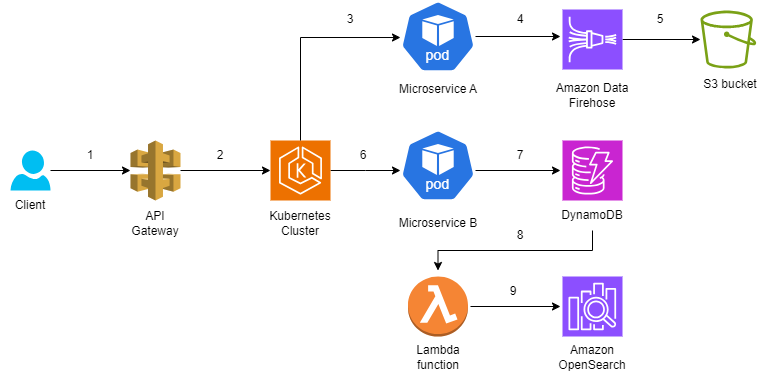
Note: Although the architecture above mentions AWS services, the same architecture can be implemented on top of Azure, or GCP.
Summary
In this blog post, I have reviewed the pros and cons of using containers and Serverless.
Some use cases are more suitable for choosing containers (such as modernization of legacy applications), while others are more suitable for choosing serverless (such as event-driven architecture).
Before designing an application using containers or serverless, understand what are you trying to achieve, which services will allow you to accomplish your goal, and what are the services’ capabilities, limitations, and pricing.
The public cloud allows you to achieve similar goals using different methods, based on different services – never stop questioning your architecture decisions over time, and if needed, adjust to gain better results (in terms of performance, cost, etc.)
About the authors
Efi Merdler-Kravitz is an AWS Serverless Hero and the author of ‘Learning Serverless in Hebrew’. With over 15 years of experience, he brings extensive expertise in cloud technologies, encompassing both hands-on development and leadership of R&D teams.
You can connect with him on social media (https://linktr.ee/efimk).
Eyal Estrin is a cloud and information security architect, and the author of the books Cloud Security Handbook and Security for Cloud Native Applications, with more than 20 years in the IT industry.
You can connect with him on social media (https://linktr.ee/eyalestrin). Opinions are his own and not the views of his employer.
The Rise of AI in Cyber Threats: Key Challenges and How to Respond

While artificial intelligence (AI) can greatly increase productivity in the workplace, it can also be exploited to launch complex and sophisticated cyber-attacks. A recent report from the UK’s National Cyber Security Center (NCSC) claims that AI will “almost certainly increase the volume and heighten the impact of cyber-attacks over the next two years”.
Generative AI models, which can create new content such as text, images, and videos, have sparked controversy as they can be easily exploited to carry out malicious activities. For example, threat actors can use Generative AI to generate convincing phishing emails to lure people into handing over credentials, or other types of sensitive information. Likewise, AI can be used to create deepfake videos to manipulate public opinion on a variety of matters, including elections.
In this article we will explore some of the ways that AI has made it possible for even inexperienced hackers to join the ranks, allowing them to orchestrate sophisticated attacks with relative ease.
Polymorphic Viruses
Artificial Intelligence (AI) has significantly accelerated the development of polymorphic viruses, making it easier for hackers to create and deploy these malicious programs. AI-powered tools can rapidly generate countless code variants and code strings, allowing polymorphic viruses to evade detection by antivirus software and adapt to new environments. By leveraging machine learning algorithms and mutation engines, virus strains can be effortlessly created which continuously mutate and evade detection. As a result, polymorphic viruses have become a significant threat to cybersecurity, capable of infecting files on any operating system. While security technologies and methods, such as behavior-based analytics and application whitelisting can help detect these viruses, will they will be enough to adequately safeguard against such threats in the future?
The Use of Deepfakes for Social Engineering
Deepfakes are artificially created digital content that can deceive people into believing they’re seeing or hearing something that never actually occurred. According to the World Economic Forum, an alarming 66% of cybersecurity professionals encountered deepfake attacks within their own organizations in 2022, highlighting the prevalence of this type of threat.
These highly realistic forgeries can be easily produced using generative AI tools (mentioned above), and they have already been used to create fake videos of public figures, as well as unauthorized pornographic content. Unfortunately, deepfakes have also been employed to spread propaganda and influence political and social outcomes, and they can even be used to add credibility to social engineering attacks, such as impersonating senior executives on video and phone calls.
In recent years, deepfakes have been used to trick people into sending large sums of money to cybercriminals, with criminals using deepfakes to impersonate colleagues and initiate fraudulent payments. To prevent similar attacks, organizations should prepare by implementing robust governance mechanisms, such as requiring multiple sign-offs for payments.
AI Voice Cloning
Alongside the growing menace of visual deepfakes, AI voice cloning has emerged as a major concern. The widespread use of voice biometrics in various devices and systems, touted as a robust security measure, has now been rendered vulnerable to hacking. This is because AI has advanced to the point where it can accurately replicate audio fingerprints and mimic voice clips from mere sample vocals. The implication is that voice-protected systems are no longer secure, leaving them susceptible to manipulation by hackers. This can lead to a range of nefarious consequences, as hackers manipulate audio files to convincingly perpetuate false narratives.
AI Keylogging
AI Keylogging tools can actively record every keystroke, collecting sensitive information such as passwords, with astonishing accuracy, boasting a success rate of nearly 95%. This means that even the most cautious and security-conscious individuals can be vulnerable to having their sensitive information compromised by this type of malware. To defend against AI-powered keyloggers, it is essential to implement a multi-layered approach. One effective strategy is to monitor user behavior to identify and respond to unusual typing patterns. Additionally, a robust endpoint security solution can detect and prevent malware-driven keyloggers from infiltrating systems. Multi-factor authentication (MFA) adds an extra layer of protection, requiring an additional authentication factor even if keystrokes are intercepted. To ensure the integrity of keystrokes, encryption can be used to safeguard captured data, making it indecipherable without the encryption key. Finally, regular updates and patches to software, operating systems, and security applications are crucial to maintaining a secure environment and addressing known vulnerabilities exploited by attackers.
Better Spelling and Grammar To Evade Spam Filters
Cybercriminals have traditionally used poor spelling and grammar to mask their phishing emails, but with the advent of AI-powered writing tools, they can now create convincing social engineering campaigns in any language in a matter of seconds. This new approach has made it increasingly difficult for spam and malicious content filters to detect and block these emails. According to a recent report by cybersecurity firm SlashNext, the use of AI-generated content has led to a 1,265% surge in phishing emails since 2022. As a result, AI-generated content has become a widespread and effective tactic used by cybercriminals on a large scale, making it a crucial concern for individuals and organizations seeking to protect themselves from cyber threats.
AI Brute Force Attacks & CAPTCHA Cracking
AI-powered brute force attacks have emerged as a significant threat to online security. These attacks use machine learning to analyze user behavior and patterns to crack passwords faster. Additionally, AI has also been able to outsmart CAPTCHA systems, which were previously designed to distinguish between human and bot interactions. By leveraging patterns learned from human behavior, AI can now accurately solve CAPTCHA forms, rendering these security measures less effective in preventing bots from accessing secured locations.
Specialized Language Models Are on The Rise
While not a threat in itself, the rise of large language models (LLMs) has transformed the field of organizational cybersecurity, arming security teams with the power to sift through large amounts of data and generate actionable insights with simple queries. While these models have shown remarkable capabilities in understanding and generating human-like text, they are still limited in their ability to comprehend the intricacies of specialized cybersecurity datasets. However, in the coming years security teams can expect to transition to smaller language models that offer tailored and actionable insights, real-time data training, and the ability to adapt quickly to the ever-evolving threat landscape. These small language models will provide more focused and effective solutions for cybersecurity teams, enabling them to stay ahead of the curve in the fight against cyber threats.
Conclusion
As AI becomes increasingly pervasive in our daily lives, the way cybersecurity defenders respond to its emergence will be crucial. The rise of generative AI has sparked a heated debate about its ethical implications and potential uses, but what’s clear is that organizations must act quickly to harness its power before threat actors exploit it. It’s likely that threat actors will use AI to launch sophisticated phishing campaigns, create swarms of deepfakes, and gain access to detailed information about targets, ultimately bypassing endpoint security defenses. To stay ahead of the curve, security leaders must prepare for the inevitable wave of AI-generated threats and develop strategies to mitigate their impact.
Author bio
Aidan Simister
Aidan Simister is the CEO of Lepide, a leading provider of data security and compliance solutions. With over two decades of experience in the IT industry, he is recognized for his expertise in cybersecurity and his commitment to helping organizations safeguard their sensitive data.
Comparison of Cloud Storage Services
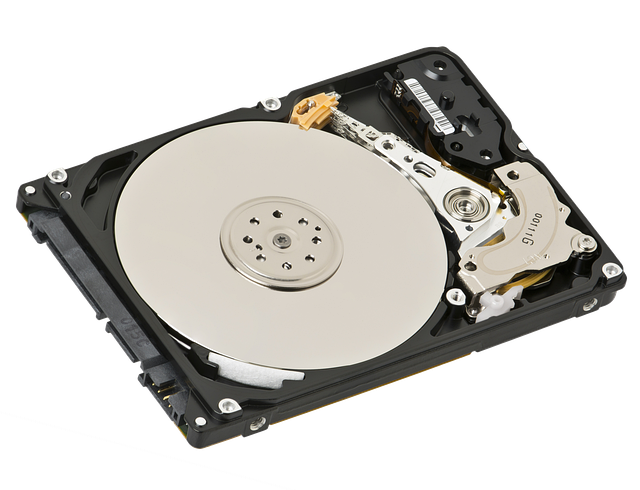
When designing workloads in the cloud, it is rare to have a workload without persistent storage, for storing and retrieving data.
In this blog post, we will review the most common cloud storage services and the different use cases for choosing specific cloud storage.
Object storage
Object storage is perhaps the most commonly used cloud-native storage service.
It is been used by various use cases from simple storage or archiving of logs or snapshots to more sophisticated use cases such as storage for data lakes or AI/ML workloads.
Object storage is used by many cloud-native applications from Kubernetes-based workloads using CSI driver (such as Amazon EKS, Azure AKS, and Google GKE), and for Serverless / Function-as-a-Service (such as AWS Lambda, and Azure Functions).
As a cloud-native service, the access to object storage is done via Rest API, HTTP, or HTTPS.
Unstructured data is stored inside object storage services as objects, in a flat hierarchy, where most cloud providers call it buckets.
Data is automatically synched between availability zones in the same region (unless we choose otherwise), and if needed, buckets can be synched between regions (using cross-region replication capability).
To support different data access patterns, each of the hyperscale cloud providers, offers its customers different storage classes (or storage tiers), from real-time, near real-time, to archive storage, and a capability for configuring rules for moving data between storage classes (also known as lifecycle policies).
As of 2023, all hyperscale cloud providers enforce data encryption at rest in all newly created buckets.
Comparison between Object storage alternatives:
As you can read in the comparison table above, most features are available in all hyper-scale cloud providers, but there are still some differences between the cloud providers:
- AWS – Offers a cheap storage tier called S3 One Zone-IA for scenarios where data access patterns are less frequent, and data availability and resiliency are not highly critical, such as secondary backups. AWS also offers a tier called S3 Express One Zone for single-digit millisecond data access requirements, with low data availability or resiliency, such as AI/ML training, Amazon Athena analytics, and more.
- Azure – Most storage services in Azure (Blob, files, queues, pages, and tables), require the creation of an Azure storage account – a unique namespace for Azure storage data objects, accessible over HTTP/HTTPS. Azure also offers a Premium block blob for high-performance workloads, such as AI/ML, IoT, etc.
- GCP – Cloud storage in Google, is not limited to a single region but can be provisioned and synched automatically to dual-regions and even multi-regions.
Block storage
Block storage is the disk volume attached to various compute services – from VMs, managed databases, Kubernetes worker notes, and mounted inside containers.
Block storage can be used as the storage for transactional databases, data warehousing, and workloads with high volumes of read and write.
Block storage is not just limited to traditional workloads deployed on top of virtual machines, they can be mounted as persistent volumes for container-based workloads (such as Amazon ECS), and for Kubernetes-based workloads using CSI driver (such as Amazon EKS, Azure AKS, and Google GKE).
Block storage volumes are usually limited to a single availability zone within the same region and should be mounted to a VM in the same AZ.
Comparison between Block storage alternatives:
As you can read in the comparison table above, most features are available in all hyper-scale cloud providers, but there are still some differences between the cloud providers:
- AWS – Offers a feature called Amazon Data Lifecycle Manager, which automates the process of creation, retention, and deletion of EBS snapshots.
- Azure – Offers the ability to manage data replication of persistent disks within the same region (Locally redundant storage / LRS and Zone-redundant storage / ZRS) and between primary and secondary regions (Geo-redundant storage / GRS, Geo-zone-redundant storage / GZRS, and Read-access geo-redundant storage / RA-GRS).
- GCP – Offers the ability to replicate persistent disks across two zones in the same region (Regional Persistent Disk). GCP also offers the ability to pre-purchase capacity, throughput, and IOPS to be provisioned as needed (Hyperdisk Storage Pools).
File storage
File storage services are the equivalent of the traditional Storage Area Network (SAN).
All major hyperscale cloud providers offer managed file storage services, allowing customers to share files between multiple Windows (CIFS/SMB), and Linux (NFS) virtual machines.
File storage is not just limited to traditional workloads sharing files between multiple virtual machines, they can be mounted as persistent volumes for container-based workloads (such as Amazon ECS, Azure Container Apps, and Google Cloud Run), Kubernetes-based workloads using CSI driver (such as Amazon EKS, Azure AKS, and Google GKE), and for Serverless / Function-as-a-Service (such as AWS Lambda, and Azure Functions).
Other than the NFS or CIFS/SMB file storage services, major cloud providers also offer a managed NetApp files system (for customers who wish to have the benefits of NetApp storage) and managed Lustre file system (for HPC workloads or workloads that require extreme high-performance throughput).
Comparison between NFS File storage alternatives:
As you can read in the comparison table above, most features are available in all hyper-scale cloud providers, but there are still some differences between the cloud providers:
- AWS – Offers cheap storage tier called EFS One Zone file system, for scenarios where data access pattern is less frequent, and data availability and resiliency are not highly critical. By default, data inside the One Zone file system is automatically backed up using AWS Backup.
- Azure – Offers an additional security protection mechanism such as malware scanning and sensitive data threat detection, as part of a service called Microsoft Defender for Storage.
- GCP – Offers enterprise-grade tier for critical applications such as SAP or GKE workloads, with regional high-availability and data replication called Enterprise tier.
Comparison between CIFS/SMB File storage alternatives:
Comparison between managed NetApp File storage alternatives:
Comparison between File storage for HPC workloads alternatives:
Summary
Persistent storage is required by almost any workload, including cloud-native applications.
In this blog post, we have reviewed the various managed storage options offered by the hyperscale cloud providers.
As best practice, it is crucial to understand the application’s requirements, when selecting the right storage option.
About the Author
Eyal Estrin is a cloud and information security architect, and the author of the books Cloud Security Handbook and Security for Cloud Native Applications, with more than 20 years in the IT industry.
You can connect with him on social media (https://linktr.ee/eyalestrin).
Opinions are his own and not the views of his employer.
👇Help to support my authoring👇
☕ Buy me a coffee ☕

